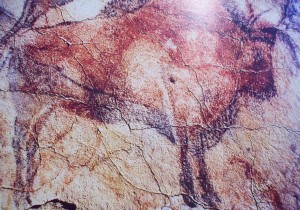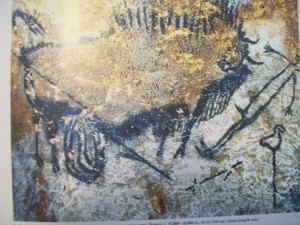Stone age cave dwellers were artists in the grand manner manifested in works of subtlety and power that has never been surpassed. Archeologist can say little about the small, hairy, and unlettered Paleolithic ancestors of ours that lived in prehistory, but one thing is clear, and that is that they were artists.

The paintings on the walls of the Altemira caves were the first to be discovered in modern time, in 1879. The caves are in Northern Spain near Santander. At first, Archeologist dismissed it as forgery but later realized it was real. The great bison does not stand alone. There is a whole herd surging majestically across the roof with one animal overlapping another. There are horses, boars, mammoths, and many other creatures that would be the desires of a Stone Age huntsman.
Our prehistoric ancestors had a technique for their cave paintings. Archeologists discovered they used stone lamps filled with animal fat. The caves are fully underground and permanently in darkness. The lamps would have been necessary with which to see. Initially, the design of the painting were engraved into soft rock. Thin lines of paint were blown onto the walls through hollow reeds. The colors were from ochre which could be crushed to a powder that yielded reds, browns, and yellow pigments. The black was obviously charcoal that likely was ground to a powder. It is likely that powdered pigments mixed with some form of binding agent, such as animal fat, and applied with reeds was the method in which the rocks were painted. The effect in cold loneliness of the cave is riveting.

People are rarely represented in cave paintings except in symbolic forms. In the painting to left from the Lascaux caves in the Dordogne, France we see a sticklike figure of a man lying in front of a diemboweled bison. Below him is a figure that looks as if it could be a bird or a totem.
In this alone, we have to wonder if prehistoric art is representative of all art that follows.
While you’re on the sight, be sure to sign up for my exciting newsletter and take a chance on winning the beautiful art coffee table book.
